How Pakistan got unenviable second spot among countries with worst air quality
Bangladesh, Pakistan and India were world’s smoggiest countries in 2023

Pakistan has been ranked second in the latest list of countries with the worst air quality, an outcome that environmentalists say illustrates a sorry tale of negligence and governmental failures.
Bangladesh, Pakistan and India were the world’s three smoggiest countries in 2023, according to a recent report by Swiss monitor IQAir, painting a bleak picture for South Asia in terms of air quality.
In Pakistan, average concentrations of PM2.5 – airborne particles known to cause lung damage – reached 73.7 micrograms, increasing from 70.9 and remaining exponentially higher than the World Health Organisation’s recommendation of 5 micrograms.
Bangladesh stood at 79.9 micrograms, while India was third with 54.4 micrograms.
Lahore was the fifth-most polluted city in 2023, following India’s Begusarai, Guwahati, Delhi and Mullanpur.
Read more: Which countries had the worst air quality in 2023?
Other major Pakistani cities with dismal air quality were Faisalabad, Peshawar, Rawalpindi, Karachi and Islamabad, which jumped from 17th to 9th in the list of the world’s most polluted capitals.
Among the major factors are climate change, industrial and vehicular emissions, increasing solid waste generation, deforestation, unplanned urbanization, and a population influx towards big cities, according to environmentalists.
Hamid Sarfraz, an Islamabad-based environmentalist, views the situation as a result of chronic “institutional and behavioural failures.”
“It’s a multidimensional problem, which requires capacity-building and political will to implement environment-related laws. Both of these, unfortunately, have been lacking,” he told Anadolu.
There are existing laws that cover almost all the major drivers of air pollution in Pakistan, but government agencies simply lack the capacity for implementation, he said.
“The first is foremost requirement is more human resources and equipment for environmental protection agencies. Second, there has to be coordination at an institutional level between different government departments,” he said.
Citing an example, he said traffic police usually do not take action against smoke-emitting vehicles, which remain a major source of pollution in big cities, while environmental protection agencies do not have the capacity to address the issue.
Also read: Air quality worsens in twin cities
“So, if these two departments collaborate, we can really cut down vehicular emissions,” he added.
Go green
Calculations by the Pakistan Air Quality Initiative, based on latest data, show that hazardous air quality is reducing life expectancy in the country by 4.4 years.
Last August, a report by the University of Chicago’s Energy Policy Institute warned that increasing air pollution could cut life expectancy of residents of Lahore, Peshawar, Kasur and Sheikhupura by at least seven years.
For Shabina Faraz, a Karachi-based analyst focusing on environmental issues, the country’s “hellish” public transport system remains one of the worst contributors to the problem.
“Transport and industrial emissions are a leading cause. We’re seeing industries, especially export-oriented sectors, starting to take some steps, but there is still no sign of improvement when it comes to vehicular emissions,” she told Anadolu.
As a short-term measure, she suggested, the government should focus on “green public transport systems” in major cities to reduce the number of vehicles, especially the “uncountable” number of motorbikes.
In the long-term, the only way to go is “smart sustainable cities,” she added.
Regarding the issue of solid waste management, she stressed the need for proper landfill sites.
“Pakistan’s solid waste generation is less than developed countries, but it is severely lagging in terms of capacity to treat this waste,” she said.
Backing her views, Sarfraz said authorities must also focus on reducing industrial waste, suggesting tax concessions as a potentially useful incentive.
Forests, agricultural land lost to housing
A mounting housing crunch is rapidly devouring Pakistan’s forests and agricultural lands, which experts warn will have cascading effects on the environment and the country’s food security.
There is a rush of construction in major and small cities, with the greatest casualty almost always being forests, trees and green spaces.
Pakistan’s total area under forest cover is less than 5%, with a further 1.5% of these forests being lost every year, according to official figures.
Prime Minister Shehbaz Sharif has recently announced an ambitious “Green Pakistan Initiative” aimed at improving dwindling forest cover, but its impact will only materialise in years to come.
The housing needs of Pakistan’s burgeoning population – officially just short of 242 million – have already turned large swaths of land in big and small cities into concrete jungles, particularly Punjab and Sindh provinces, considered the country’s two main breadbaskets.
Real estate developers have taken farmlands from thousands of farmers, leaving big cities like Karachi, Lahore and Islamabad brimming with and encircled by concrete structures.
Around 20-30% of fertile land in Punjab, which meets 65% of Pakistan’s total food needs, has been converted to use for industry or housing, according to Shaukat Ali Chadhar, president of the Kisan Board of Pakistan, an agricultural advisory and research organisation.
In Lahore alone, 70% of agricultural land has been converted to housing and industrial units, followed by Gujrat at 60%, he said.
In other agriculture districts in central Punjab, such as Faisalabad, Gujranwala, Sheikhupura and Kasur, 30-40% of fertile land has been sold to property developers and industrialists, he added.
The land-holding ratio, Chadhar said, is still satisfactory in southern Punjab and northern parts of Sindh, which together currently produce more than half of Pakistan’s wheat, sugarcane and cotton.

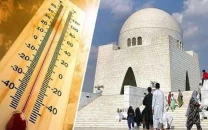
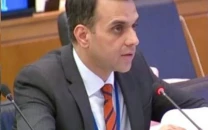




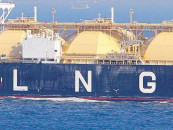

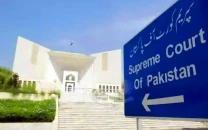


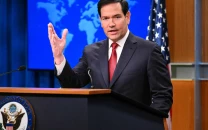






COMMENTS
Comments are moderated and generally will be posted if they are on-topic and not abusive.
For more information, please see our Comments FAQ